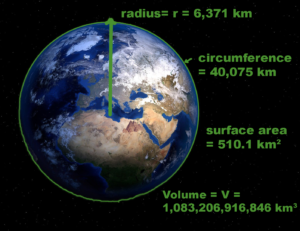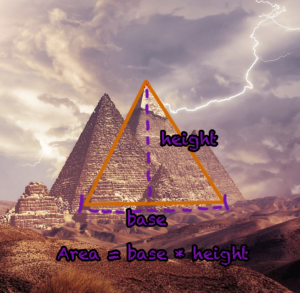All Math is Sacred
Math is the language of the universe and yes – your brain can handle it. The doctor guarantees it!
How often have you heard someone say “I don’t do math”? How about “Numbers aren’t my thing”? Alternately, have teachers said you do your calculations wrong? Or have pompous professors told you that you’re not good enough for a career in high-stakes academic research? Such statements seem common in our superstitious Western culture, and even in our schools. But why?
Math is a universal language and it’s here for everyone. I’m here to tell you that you can learn math, and that the basics aren’t nearly as hard as you think. Learn more below.
Measurements and units
Did you know that you’re already a scientist — AKA a natural philosopher? Anyone can be. Measurements are the way the scientists and philosophers like us can understand the natural world and we all make measurements every day. A measurement is simply when we use a tool to observe details about nature like length, color, volume, or time. Your eyes make measurements of color every day (unless you’re colorblind). Your ears measure the frequencies of sund waves and your fingers measure temperature. Sometimes, we use numbers for measurements, which are noted down in units as shown to the right. Units are simply a basis of comparison we can all share. If you’re going to take measurements, I recommend using SI units, unlike those grungy engineers who refuse to listen to reason and use Imperial units. Sorry Americans, but don’t worry – SI units are easy to learn. Of course, if you wanted, you could use your own units and measure length using your cat if you wanted – you might be four “cats” tall – but every cat is different, so it would be tricky to compare with friends.

Distance, Circumference, Area, Volume
These three concepts are enough to understand the basics of geometry. But what do they mean? Do the math department professors refuse to explain them to you, no matter how many times you ask in your complex algebra class? Learn more here:
Radius: A useful concept: the distance from the center of something to the outside, or 1/2 the diameter. A basketball has a diameter of 0.24 m, or a radius of 0.12 m.
Circumference: The distance around an object in meters. You can measure this by wrapping a tape measure around it or along it’s border.
Area: The “flat,” 2-dimensional size of something – like the space a poster takes up on your wall – measured in meters squared (m2). For a rectangular poster, the area A = length*height.
Volume: The 3-dimensional space “inside” something, measured in (m3). For example, the volume of a large soda bottle is 2L=0.001 m3.
Confused? No you’re not.


- Above, we show how to calculate the area of a triangle (not the 3D) pyramid
- For the area of the whole 3D pyramid, we simply add the area of the four triangular faces to the area of the square on the bottom
- Some pyramids have triangular bases, or even other shapes, so there are many possibilities for exciting maths about them.
- Those pyramids are tricky, but strong!
Common shapes
We learn our shapes when we’re just infants. Yet once we reach school, teachers will say we don’t understand them. Let’s break through that mental lego-block!
- Squares and rectangles – the simplest shapes. The area (space inside) = length * height = L* h
- Cubes – 3D squares. Area = 6*L*L = 6L2. Volume = L*L*L = L3
- Circles – one of nature’s most beautiful and elegant shapes. Area = π*r*r= πr2
- Spheres – 3D circles. Surface area = 4πr2
- Triangles – one of the coolest shapes. Area = (1/2) base * height.
- Pyramids – The most incredible 3D shape! Area, Volume? Depends on the type of pyramid, of which there are many!
“My teacher said I was bad at math. Thanks to SpacetimePyramid that’s no longer true!”

Gabby Realqot
“I had no idea about area-this or spheres-that. Now that I joined spacetimepyramid.com I’m working on my PhD in math!

Erika Meziurs
“Unlike at university, I feel like I’m learning new and exciting things about the universe every day!”

Tarah Sedthis